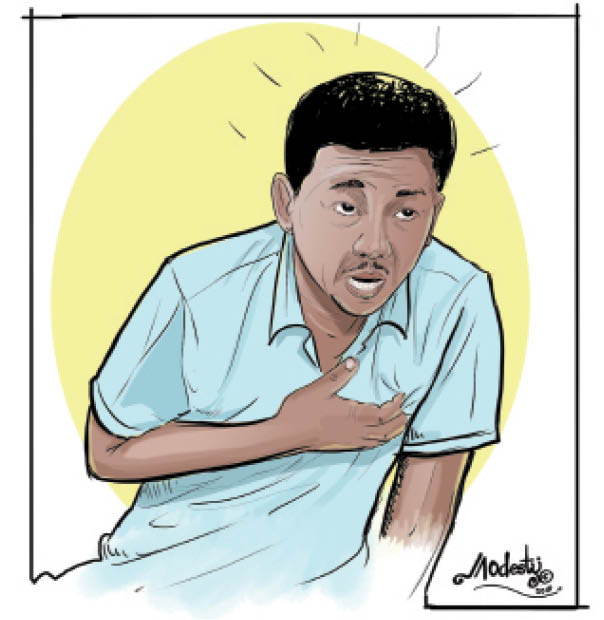I suffered from Pulmonary embolism
Let me first and foremost thank you and the management of Daily Trust for this column which is my every Tuesday delight. Recently although I am recovering remarkably now, I suffered Pulmonary embolism which my doctor said is a complication of another problem. I wish to know more about this problem. Jessica V. Thanks, […]

Let me first and foremost thank you and the management of Daily Trust for this column which is my every Tuesday delight. Recently although I am recovering remarkably now, I suffered Pulmonary embolism which my doctor said is a complication of another problem. I wish to know more about this problem.
Jessica V.
Thanks, Jessica, for your question and wishing you more health. According to medical experts Pulmonary embolism is a sudden blockage of a major blood vessel (artery) in the lung, usually by a blood clot. In most cases, the clots are small and are not deadly, but they can damage the lung. But if the clot is large and stops blood flow to the lung, it can be deadly.
What are the symptoms?
• Sudden shortness of breath.
• Sharp chest pain that is worse when you cough or take a deep breath.
• A cough that brings up pink, foamy mucus.
• Pulmonary embolism can also cause more general symptoms. For example, you may feel anxious or on edge, sweat a lot, feel lightheaded or faint, or have a fast heart rate or palpitations
What are the causes?
• In most cases, Pulmonary embolism is caused by a blood clot in the leg that breaks loose and travels to the lungs.
• A blood clot in a vein close to the skin is not likely to cause problems. But having blood clots in deep veins (deep vein thrombosis) can lead to Pulmonary embolism.
• Other things can block an artery, such as tumors, air bubbles, amniotic fluid, or fat that is released into the blood vessels when a bone is broken. But these are rare.
What increases your risk?
Anything that makes you more likely to form blood clots increases your risk of Pulmonary embolism. Some people are born with blood that clots too quickly. Other things that can increase your risk include:
• Being inactive for long periods. This can happen when you have to stay in bed after surgery or a serious illness, or when you sit for a long time on a flight or car trip.
• Some diseases, such as cancer, heart failure, stroke, or a severe infection.
• Pregnancy and childbirth (especially if you had a cesarean section).
• Taking birth control pills or hormone therapy.
• Smoking
• You are also at higher risk for blood clots if you are an older adult (especially older than 70) or extremely overweight (obese)
How is it diagnosed?
• It may be hard to diagnose Pulmonary embolism, because the symptoms are like those of many other problems, such as a heart attack, a panic attack, or pneumonia.
• A doctor will start by doing a physical exam and asking questions about your past health and your symptoms. This helps the doctor decide if you are at high risk for pulmonary embolism.
• Common tests include blood tests and CT- Scan
How is it treated?
• Treatment with medicines called anticoagulants. They help prevent new clots and keep existing clots from growing.
• If symptoms are severe and life-threatening, “clot-busting” drugs called thrombolytics may be used. These medicines can dissolve clots quickly, but they increase the risk of serious bleeding.
• Another option is surgery or a minimally invasive procedure to remove the clot (embolectomy).
How can it be prevented?
• You can reduce your risk of pulmonary embolism by doing things that help prevent blood clots in your legs such as avoid sitting for long periods.
• By getting up and walk around every hour or so, or flex your feet often.
• When you travel, drink lots of fluids.
